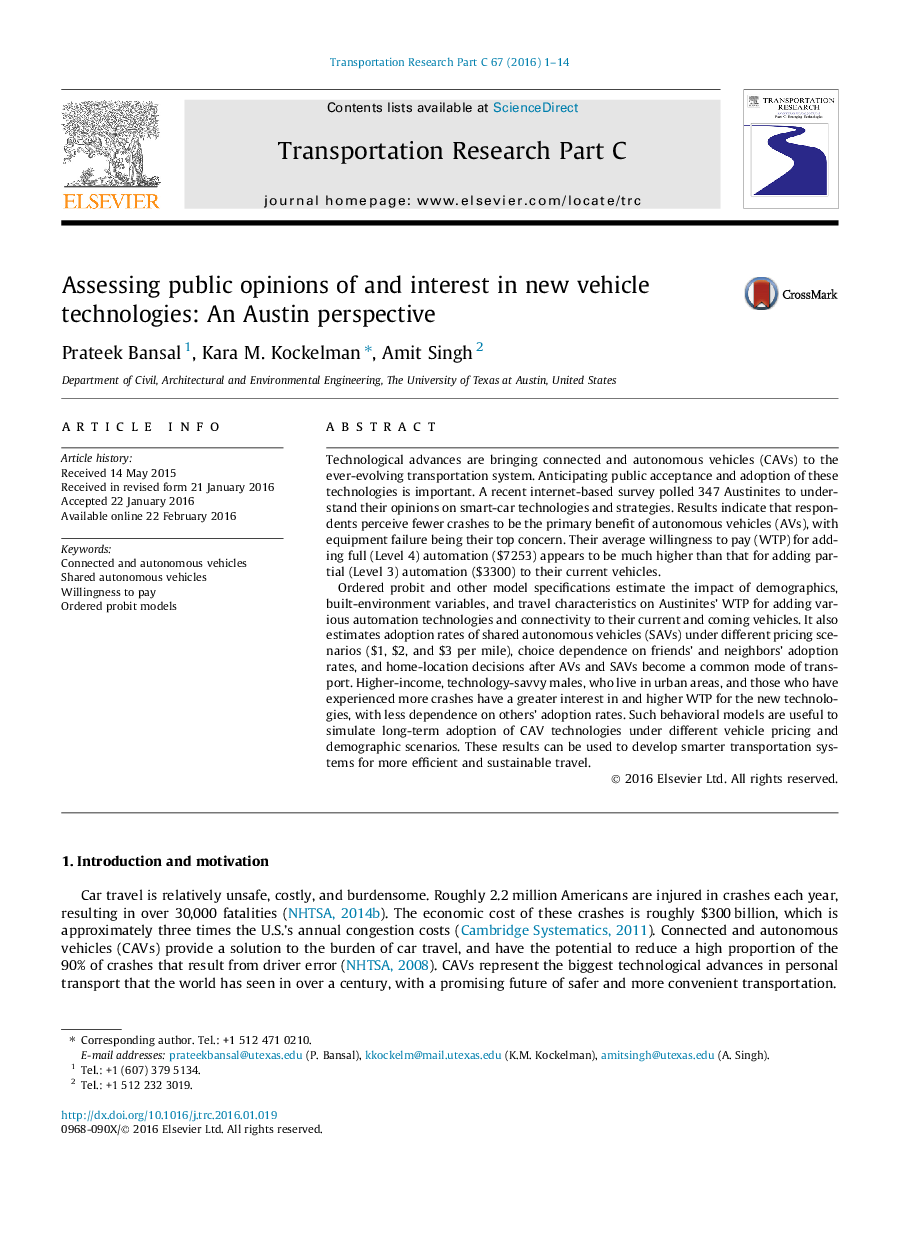| Article ID | Journal | Published Year | Pages | File Type |
|---|---|---|---|---|
| 6936361 | Transportation Research Part C: Emerging Technologies | 2016 | 14 Pages |
Abstract
Ordered probit and other model specifications estimate the impact of demographics, built-environment variables, and travel characteristics on Austinites' WTP for adding various automation technologies and connectivity to their current and coming vehicles. It also estimates adoption rates of shared autonomous vehicles (SAVs) under different pricing scenarios ($1, $2, and $3 per mile), choice dependence on friends' and neighbors' adoption rates, and home-location decisions after AVs and SAVs become a common mode of transport. Higher-income, technology-savvy males, who live in urban areas, and those who have experienced more crashes have a greater interest in and higher WTP for the new technologies, with less dependence on others' adoption rates. Such behavioral models are useful to simulate long-term adoption of CAV technologies under different vehicle pricing and demographic scenarios. These results can be used to develop smarter transportation systems for more efficient and sustainable travel.
Keywords
Related Topics
Physical Sciences and Engineering
Computer Science
Computer Science Applications
Authors
Prateek Bansal, Kara M. Kockelman, Amit Singh,
